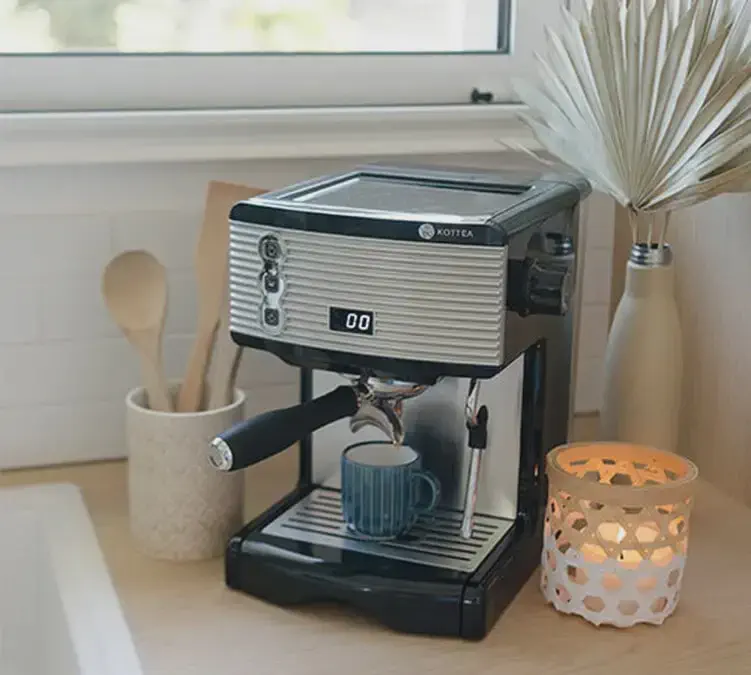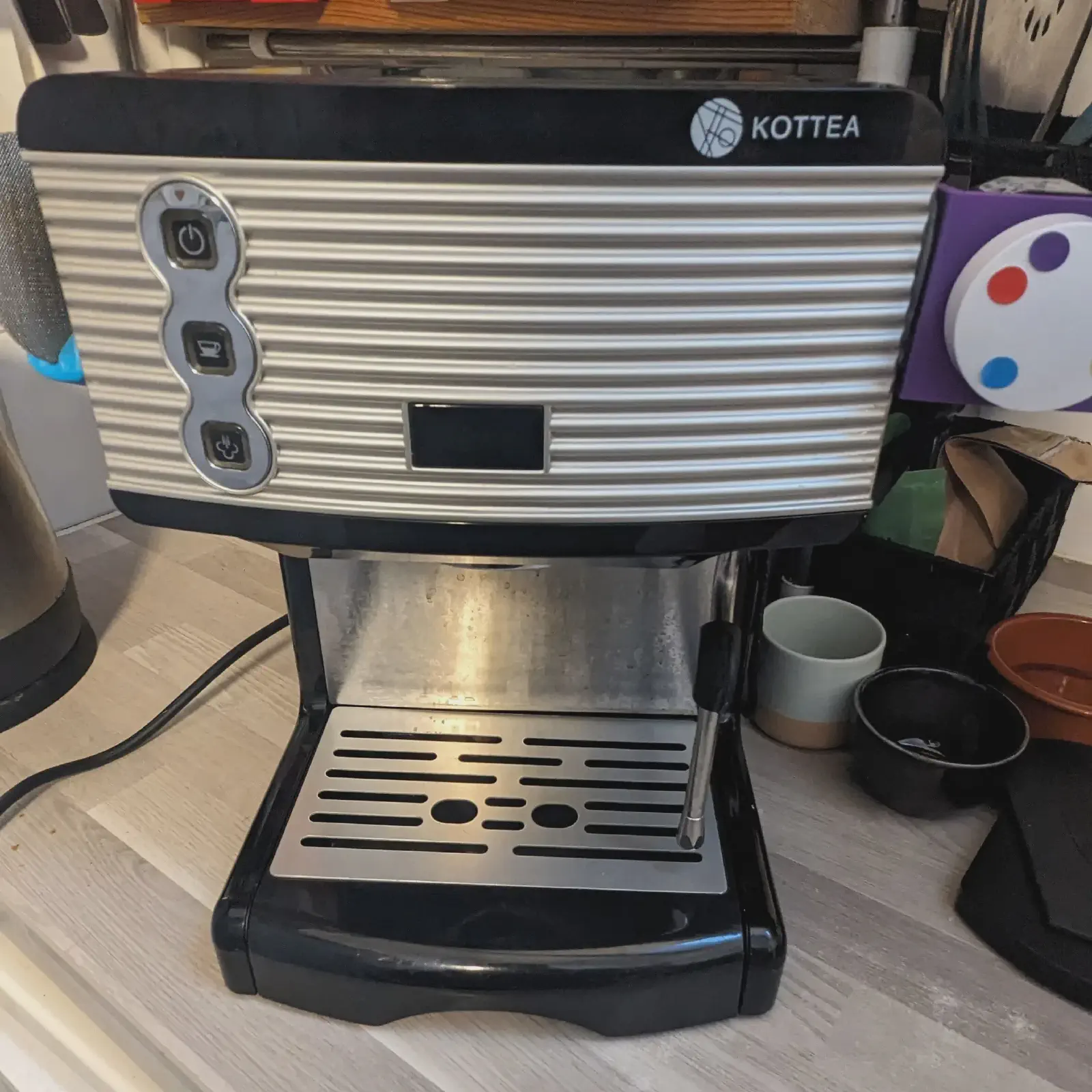The Kottea CK150S: an unfairly criticized machine?

Explore the Kottea CK150S, an espresso machine with an attractive price-to-quality ratio that aims to deliver a pleasant coffee experience, even if some feedback is mixed. In this article, I share my assessment after one year of use, highlighting the strengths and weaknesses of this appliance. You’ll also find tips for optimizing your extractions and reflections on the question of extraction temperature. Discover whether the criticisms are justified and how to get the best out of your Kottea CK150S.
The Kottea CK150S is an espresso machine that has been sitting in my coffee space for over a year. It’s an entry-level machine equipped with an aluminum thermoblock and a 58 mm stainless steel group head. For an affordable price, you’ll get a stainless steel portafilter, programmable dosing, and a set of pressurized and single-wall filters. Enough to get you started in the world of espresso at a lower cost (€159 in November 2023).
However, this machine suffers from very bad press. From the first searches, criticisms appear that should be deal-breakers for the purchase. But are they really justified? Let’s look at this in detail.
Is the coffee extracted with this machine cold?
This machine is not without flaws. For example, it lacks a pressure gauge and a PID, which would have been welcome. Its design remains simple: an aluminum thermoblock, which proves sufficient for obtaining decent extractions.
The most common criticism is that of “cold” coffee. Admittedly, this isn’t a saturated group like on a La Marzocco, nor an E61 group head. Heat transfer is limited.
Many claim that the thermoblock isn’t in contact with the shower screen and doesn’t heat enough. But this shows a lack of understanding of how an espresso machine works: even on high-end machines, baristas heat their portafilter before the first extraction.
Two simple tips for hotter coffee:
- Heat the portafilter with 2 or 3 flushes before the first coffee.
- Also heat the cup to avoid thermal shock.
And to go further, opt for a bottomless portafilter – for example ( the Lelit one which is an excellent deal as it’s sold with an IMS filter).
A demanding machine for good extractions
The real challenge with the CK150S is to master your extractions. It’s essential to have:
- a quality grinder,
- freshly roasted coffee,
- time to experiment.
MaxiCoffee describes it as an evolving machine: that’s true, it requires practice. Don’t expect a perfect espresso from the first use. Extracting an espresso isn’t as simple as it seems.
Pressurized filters, often criticized, can splash. But that’s simply how they work. We recommend avoiding them.
Instead, invest in a grinder like the Kingrinder K6 and switch to single filters. That’s where the machine reveals its potential.
My feedback and my workflow
As mentioned, I’ve been using this machine since September 2022, at a rate of two espressos per day. I’ve never had a coffee at 40°C as some claim. I’ve been able to extract both light and medium dark roasts, with satisfying and aromatic results.
My current workflow:
- use of a bottomless portafilter (little preheating needed),
- heated cup and puck screen,
- paired with a Timemore Chestnut X and a Krinder K6,
- pump modification with a variable speed controller for water flow control.
In conclusion, if you want to explore the art of espresso without investing thousands of euros, the Kottea CK150S is an excellent choice. It offers a good balance between price and possibilities, with many compatible accessories and an enriching learning curve.
- Very affordable price for a 58 mm machine
- Compatible with many accessories (portafilters, single filters, etc.)
- Correct extraction with a good grinder and a bit of practice
- Compact format and easy to place in a kitchen
- No PID or pressure gauge
- Requires time and patience to use it well
- Unconvincing pressurized filters
- Temperature needs monitoring (preheating essential)


